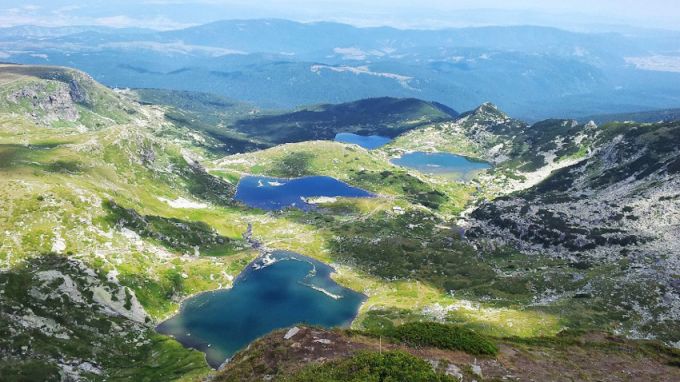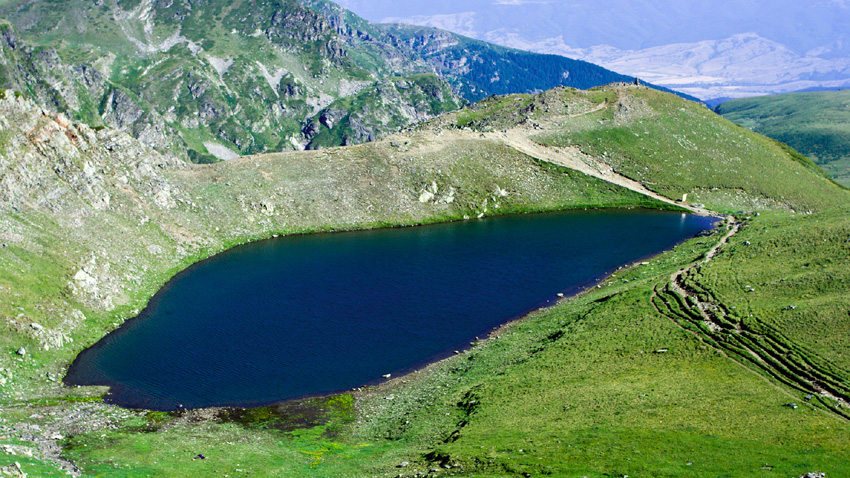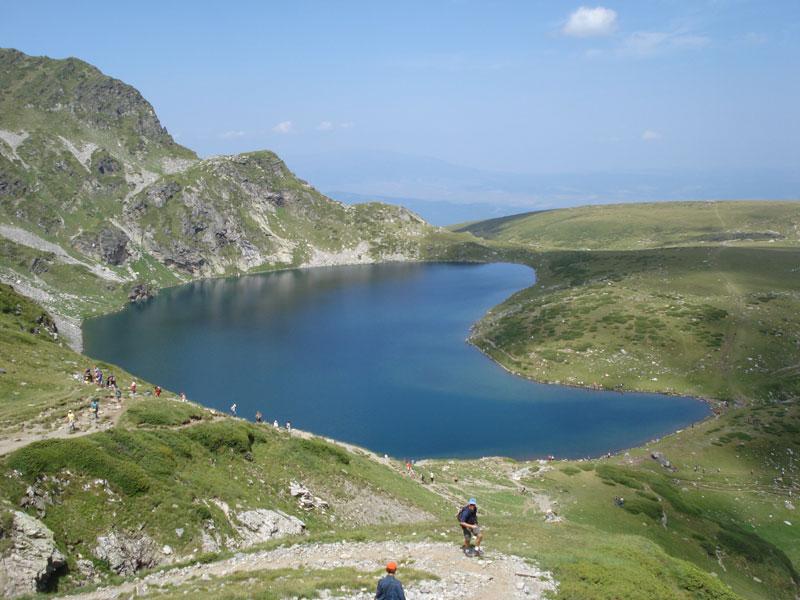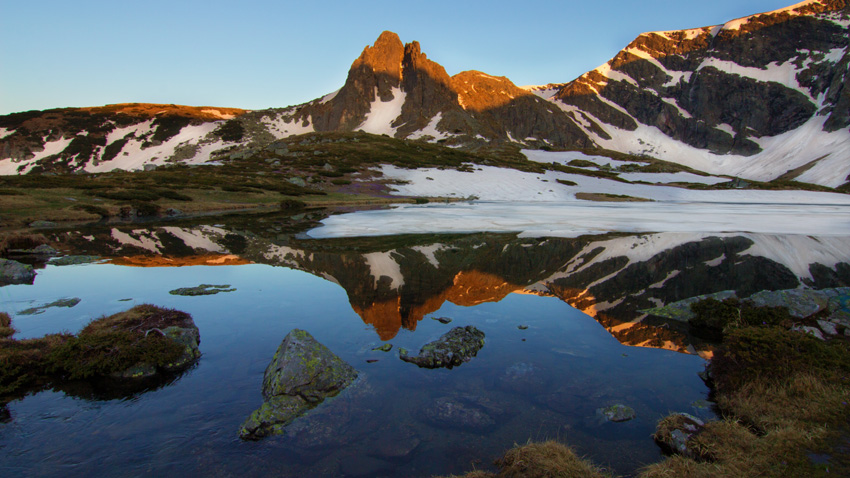 3
3
As a result of glacial erosion during the Quaternary era, clusters of lakes were formed in the higher reaches of Rila Mountain, an essential element of the landscape. The string of the seven lakes of Rila is the longest, most scenic and most visited of them all.
They are on the 100 national tourist sites list, says Krasimir Andonov, director of Rila National Park and explains what makes them so popular:
“Their natural beauty. Many tour operators organize visits to the region, mostly in summer. In August, this is the place where the White Brotherhood meet. The chairlifts from Pionerska lodge to the Rila Lakes lodge provides easy access, making the destination very popular in Bulgaria and the world, so the number of tourists coming here has been going up.”

What is the origin of the names of the lakes?
“The names were firmly established in the 1930s when all lakes in Mount Rila were mapped. The names are all connected to some characteristic feature. Dolnoto ezero – the Lower Lake – bears this name because of its location, Ribnoto – the Fish Lake – because there is fish in it. The names of the other lakes come from their shape. In the tradition of the White Brotherhood, connected with this region since 1929, each one has a name in Sanskrit. The lakes are all at an altitude of 2,535 to 2,095 meters. Sulzata (the Tear) is the highest. Okoto (the Eye) is the deepest of all glacial lakes in the Balkans, reaching down to 37.5 meters. It also goes by the name of Surtseto (the Heart). Bubreka (the Kidney) is the lake that is emblematic of Rila and of Bulgaria. Bliznaka (the Twin) with its area of 9.1 hectares is the biggest and longest. It tapers off in the middle, and in years of drought, is almost broken into two halves, hence the name. Above it towers Haiduta or Haramiyata peak, 2,465 m. Trilistnika (the Trefoil) is irregular in shape, forming three semicircles. Ribnoto Lake has grassy shores, whereas Dolnoto Lake is located further down and is the source of the river Jerman.”

Popular imagination frequently creates myths and legends about natural phenomena. Are there such legends about the Seven Rila Lakes?
“Many legends have come down to us through the ages. The very first legend tells the story of the lakes’ creation. Many years ago there was a small village between Panichishte village and the seven lakes of Rila. In that village there lived a beautiful girl – Smilyana. One day she went to the well to fetch water. A sunray slid down the coppers she was carrying, they reflected it and it lit up her face. The Sun was dazzled by her astounding beauty and fell in love with her. From that day on, he could think of nothing else. In the morning she would watch the sunrise in the doorway of her cabin, in the evening she would watch as the sun set. Then harvest time came. Smilyana went down to the valley with her friends to reap the field of the local Bey. The day was gloomy but when she appeared the sun seemed to shine. The Bey was so taken with Simlyana that he assaulted her but she fought back fiercely. As punishment she was hanged. When the sun came out and set eyes on this mournful picture, it cried. Its sparkling tears fell down and filled the valleys of Rila, and that was how the Seven Rila lakes came into being. That is the reason why people call the water of the lakes the Tears of the Sun. The second legend has to do with the conservation of energy. According to this legend there is a reason why Okoto Lake is called that - the Eye – because it is the “eye” of nature, watching what people in these parts are doing. When they break the laws of nature, they are punished by Bubreka – the Kidney. Stories are told of shepherds who have taken their flocks out to graze on the nearby ridges and have broken these laws. Then a storm cloud would rise from Bubreka Lake and rain would pelt down from it, destroying crops and herds. According to Bulgarian mythology, each lake had its own mythical master and patron. That is why one of them bears the name Halovitoto – derived from the word “hala” – whirlwind. Once, people believed it was home to whirlwinds and storms. Other lakes had to be safeguarded by wood-nymphs.”

Have the Seven Lakes of Rila been studied?
“Earliest studies go back to 1890, they were conducted by Serbian geologist Jovan Cvijic, who ascertained the lakes were of glacial origin. In the time from 1930 until 1932, research was conducted by Austrian experts. In the 1950s, freshwater algae were studied, in 1960 analyses were conducted by Academica association. As Rila was proclaimed protected territory in 1992, research was conducted and a system of monitoring put in place of the habitats of rare and endangered flora, fauna and mycota species, as well as biotic environmental components.”

Part of the E4 European long distance path cuts across the cirque of the Seven Rila Lakes. For those who prefer trekking in winter, there are winter markers.
English version: Milena Daynova
Photos: bg.wikipedia.orgThe house of Vasil Levski, Bulgaria’s national hero and organizer of the anti-Ottoman movement in the 19th c. has always been one of the most visited memorial museums in this country. The building itself is modest and its style is typical for..
In Bulgaria’s Northwestern corner a fantastic rocky landscape meets the eye – the towering Belogradchik rocks inspire awe and deference in any onlooker. The area is studded with yawning abysses, canyons and caves, gateways to the kingdom of..
“On 17 August 986 the warriors of Samuel smashed up on this spot the Byzantine invaders of Emperor Basil II. Glory forever!” These are the words engraved on a stone plate, placed at the Trayanovi Vrata (Gate of Trajan) fortress, situated some 60 km to..

+359 2 9336 661
